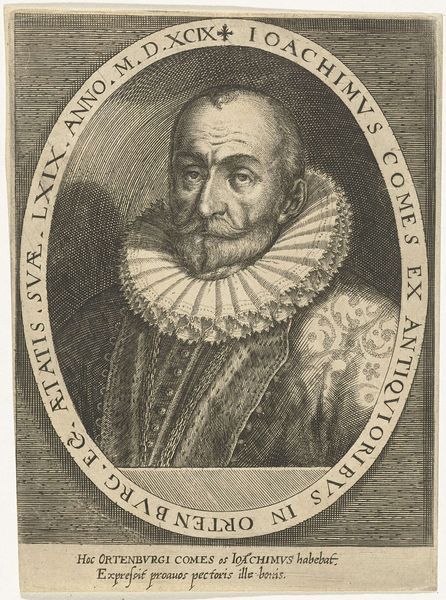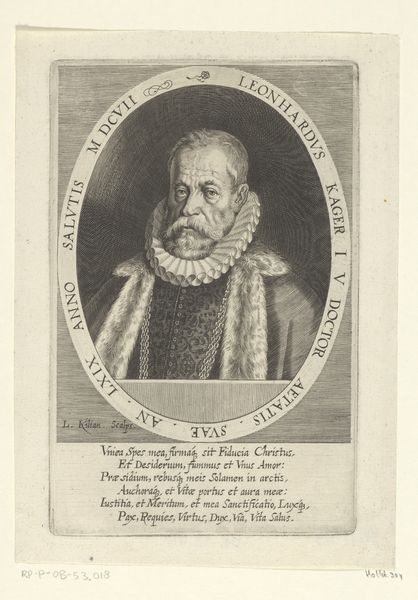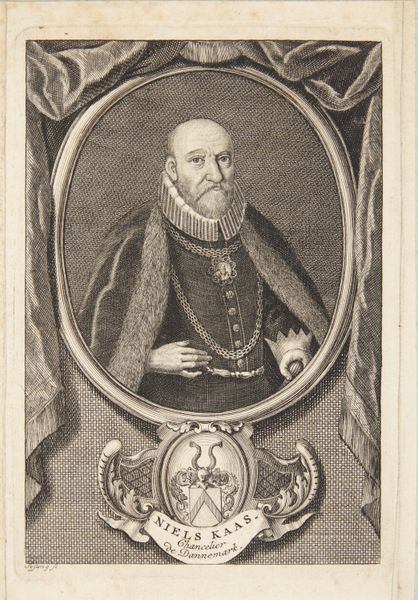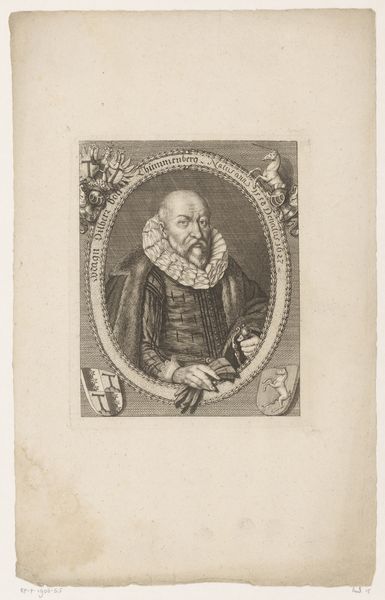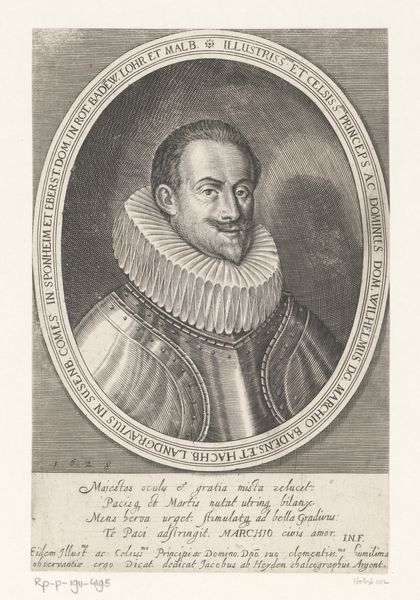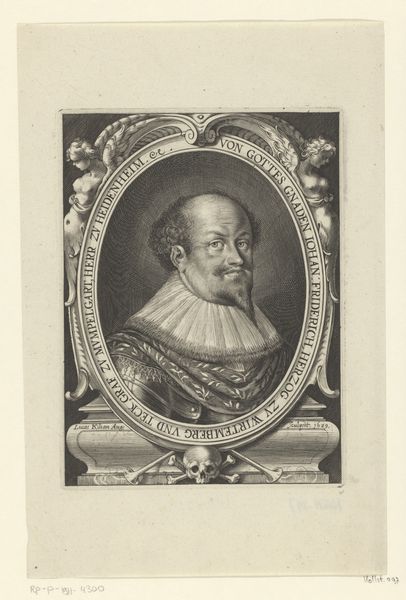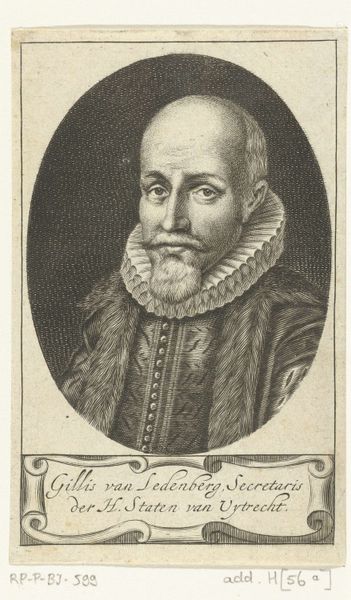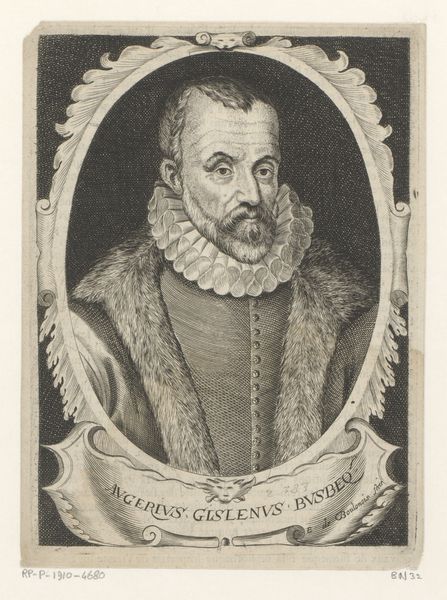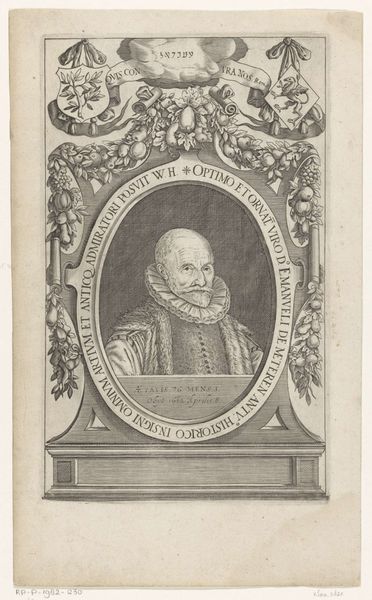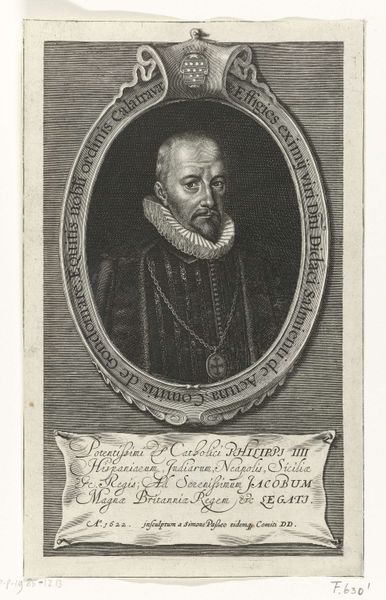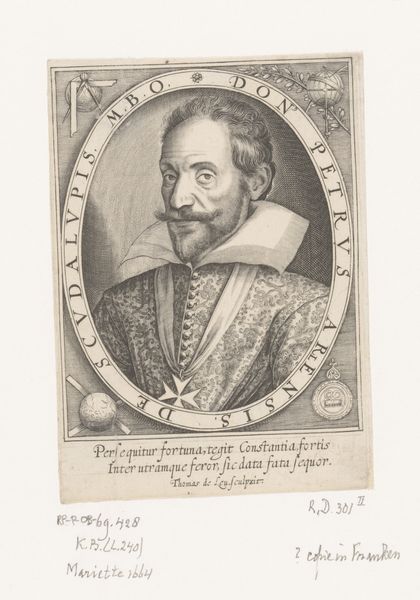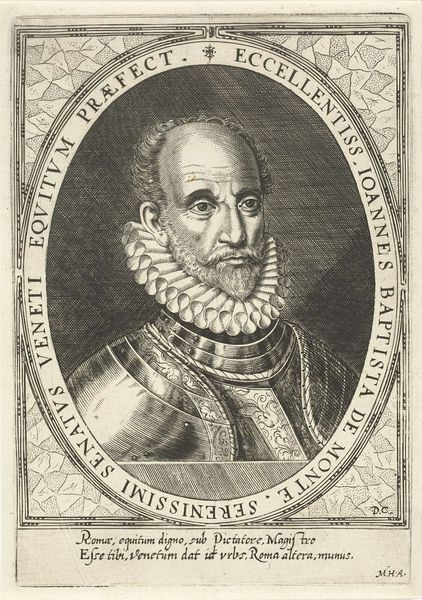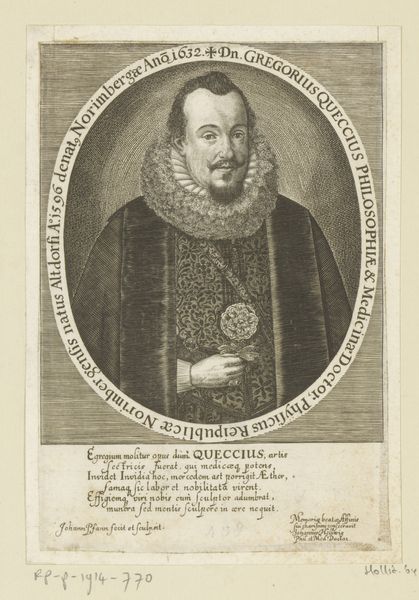
engraving
#
portrait
#
baroque
#
line
#
history-painting
#
engraving
Dimensions: height 188 mm, width 138 mm
Copyright: Rijks Museum: Open Domain
Edme de Boulonois created this print of Emanuel van Meteren using engraving, a process rooted in skilled labor and the mechanics of reproduction. Engraving involves meticulously cutting lines into a metal plate, typically copper, with a tool called a burin. Ink is then applied to the plate, filling the incised lines, and the surface is wiped clean. The print is made by pressing paper against the plate, transferring the ink from the grooves onto the paper. Notice the fine, precise lines that define van Meteren's features and clothing. The texture of his fur-lined coat and the delicate ruff around his neck are rendered with remarkable detail. This technique allowed for the mass production of images, fueling the spread of information and ideas. The labor-intensive nature of engraving highlights the value placed on skilled craftsmanship, even in the age of mechanical reproduction, and reveals the intersection of art, labor, and commerce in the early modern period. Considering the materials, making, and social context enhances our understanding of the artwork, while challenging traditional distinctions between fine art and craft.
Comments
No comments
Be the first to comment and join the conversation on the ultimate creative platform.
